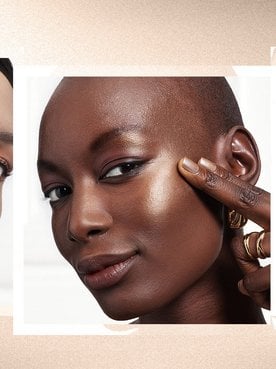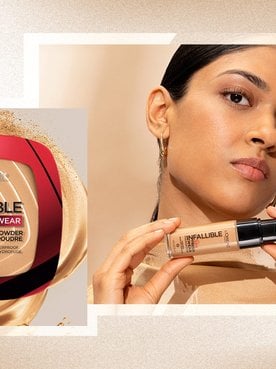Purple Shampoo & Purple Hair Care Product FAQs
What Does Purple Shampoo Do, and How Does It Work?
Purple shampoo works by neutralizing unwanted yellow and brassy tones in your hair using violet pigments. Toning purple shampoo operates on the principle of color theory: purple is directly opposite yellow on the color wheel. When applied, the purple pigments counteract and cancel out yellow and orange undertones that can appear in blonde, gray, bleached, or color-treated hair. It’s a non-permanent toning solution essential for maintaining cool-toned blonde, gray, silver, or highlighted brunette hair.
• Neutralizes brassiness: Specifically targets and eliminates yellow and subtle orange tints.
• Maintains cool tones: Helps keep your blonde, gray, or lightened hair looking fresh and vibrant between salon visits or at-home hair coloring sessions.
• Non-damaging: Unlike dyes or bleaches, purple shampoo doesn't chemically alter your hair's structure; it simply deposits purple color pigments on the surface.
For a deeper dive into how this essential product works, explore our guide on what purple shampoo does.
What’s The Difference Between Purple Shampoo, Purple Conditioner, And Purple Hair Masks?
Purple shampoo cleanses and provides initial toning, purple conditioner moisturizes and softens hair while correcting brassy tones, and purple hair treatments and hair masks offer deeper conditioning and toning power.
• Purple Shampoo:
◦ Purpose: Purple shampoo is primarily for cleansing and initial toning. Purple shampoo actively deposits violet pigments to neutralize yellow and brassy tones as you wash.
◦ Usage: Typically used in place of your regular shampoo, usually 1-3 times per week, depending on your hair's needs and desired level of toning. Elvive Color Vibrancy Purple Shampoo is typically used once a week, while EverPure Sulfate-Free Purple Shampoo is used 1-3 times a week.
• Purple Conditioner:
◦ Purpose: Purple anti-brass conditioner has a lighter dose of violet pigment and offers moisturizing and detangling benefits after washing to keep hair soft.
◦ Usage: Use purple conditioner after cleansing hair with purple shampoo, leaving it on for 1-2 minutes, as directed.
• Purple Hair Masks:
◦ Purpose: A purple anti-brass hair mask usually contains a higher concentration of violet toning pigments and conditioning agents for deeper conditioning and more powerful brass-neutralization benefits.
◦ Usage: Purple hair masks like EverPure Sulfate-Free Anti-Brass Purple Mask are typically used once a week after using purple shampoo for a more profound toning and conditioning effect.
Who Should Use Purple Shampoo or Conditioner?
Those with blonde, silver, gray, or lightened hair who want to combat unwanted yellow or brassy tones should use purple shampoo and purple conditioner. This includes:
• Blondes: Whether natural, bleached, or highlighted, these purple hair care products are perfect for maintaining cool, ash, or platinum blonde shades and preventing yellowness. Our purple shampoo for blonde hair is specifically formulated to counteract yellow tones in blonde hair. To keep your blonde hair bright and healthy, check out more blonde hair care products.
• Grays & Silvers: For those with gray or white hair looking to eliminate any yellowing caused by environmental factors, product buildup, or heat styling, a purple shampoo for gray hair can help maintain a bright, luminous silver. For those with mature gray, silver, or white hair, shampoo and conditioner formulated for gray hair provide brightening and extra-moisturizing benefits.
• Highlighted or Balayaged Hair: If you have lighter sections in brown hair that tend to go brassy, purple shampoo for dyed hair can help neutralize those specific areas.
• Color-Treated Hair: If your hair has been lifted or lightened, using purple shampoo for colored hair can prolong the life of your cool-toned color.
It's important to note that purple products are designed for toning brassy yellow tones and are not meant for hair that is dyed purple, nor will they turn your hair purple unless left on for an excessive amount of time on very porous hair, or used more frequently than recommended per week.
How Often Should I Use Purple Shampoo or Purple Conditioner?
The frequency of using purple shampoo or conditioner generally depends on your hair's current tone, porosity, and how quickly brassiness reappears, typically ranging from one to three times a week.
• General Guideline: Most people find that using a purple shampoo once or twice a week is sufficient to maintain cool tones.
• For stubborn brassiness: You might use it up to three times a week initially, or use a higher-pigment purple hair mask once a week.
• For maintenance: Once brassiness is under control, you can reduce use to once a week or every other week.
• Alternating Products: It's crucial to alternate your purple shampoo and purple conditioner with a moisturizing or color-safe shampoo and conditioner. This prevents over-toning (which can lead to a slight purple tint, especially on very porous or damaged hair) and ensures your hair remains hydrated and healthy.
• Listen to your hair: If you notice a slight purple hue, reduce the frequency of use. If brassiness returns quickly, increase usage.
What Does Purple Shampoo Do to Brown Hair?
While purple shampoo will not significantly affect the darker base color of brown hair, it can effectively help reduce brassiness in lighter sections, such as highlights or balayage. For brunettes, yellow and orange tones can often appear in lightened strands. The violet pigments in purple shampoo, like L'Oréal Paris Elvive Color Vibrancy Purple Shampoo, can counteract these yellow brassy hues, making your highlights appear cooler and brighter.
What’s The Difference Between Purple Shampoo and Blue Shampoo?
The primary difference between purple shampoo and blue shampoo is the tone of brassiness they neutralize: purple shampoo primarily targets yellow tones, while blue shampoo targets orange tones in your hair.
• Purple Shampoo:
◦ Target Tone: Primarily targets yellow tones.
◦ Principle: Purple is directly opposite yellow on the color wheel, making it highly effective at canceling out those warm, brassy yellow hues.
◦ Best For: Blondes (natural, bleached, highlighted), gray hair, and lightened sections that tend to go yellow. An anti-brass shampoo with purple pigments is your go-to for keeping platinum, ash, or cool blonde shades vibrant.
• Blue Shampoo:
◦ Target Tone: Primarily targets orange tones.
◦ Principle: Blue is directly opposite orange on the color wheel, making it effective at neutralizing stubborn orange and red-orange brassiness.
◦ Best For: Brunettes with highlights, balayage, or natural brown hair that develops unwanted orange or reddish undertones.
To choose the right product, identify the underlying brassy tone in your hair: if it's yellow, opt for a purple shampoo; if it's orange, reach for a blue shampoo.
Can I Use Purple Shampoo on Natural Gray or White Hair?
Yes, purple shampoo is highly effective for use on natural gray or white hair to remove yellow discoloration and maintain a bright, cool-toned appearance. Gray and white hair can often develop a yellowish tint due to various factors:
• Environmental Exposure: Sun, pollution, and even hard water can cause yellowing.
• Product Buildup: Residue from hair products can accumulate and contribute to dullness and yellowing.
• Heat Styling: Frequent use of hot tools can sometimes scorch the hair, leading to yellowing.
A purple shampoo for gray hair helps to neutralize these yellow tones, leaving your natural gray or white strands looking luminous and vibrant.• Usage Tips:
◦ Start by using it once a week.
◦ Apply to wet hair, lather, and leave on for the recommended time (usually 1-5 minutes).
◦ If you notice a purple tint, reduce the frequency or rinse sooner.
◦ Alternate with a moisturizing, sulfate-free shampoo for gray hair to keep your hair healthy and prevent over-toning.
Can I Use Regular Shampoo and Purple Shampoo Together?
Yes, it is common and often recommended to alternate between a regular shampoo and a purple shampoo to achieve balanced care and prevent over-toning. Using purple shampoo too frequently, especially on porous hair, can sometimes lead to a slight violet tint.
Recommended Routine:
• 1-3 Times a Week: Use your purple shampoo (followed by purple conditioner or purple treatment for hair) to actively tone and neutralize brassiness.
• Remaining Washes: On other wash days, use a color-safe, hydrating, or repairing shampoo and conditioner. This helps to:
◦ Cleanse your hair without over-depositing purple pigment.
◦ Provide essential moisture and nourishment.
◦ Protect your hair color and maintain overall hair health.
Using both regular shampoo and purple shampoo in your hair care routine allows you to effectively manage brassiness while keeping your hair in optimal condition.
Will Purple Shampoo Lighten My Hair?
No, purple shampoo will not lighten your hair. It's a common misconception, but purple shampoo does not contain bleaching agents or any ingredients that remove your natural hair color or lift existing dye.
• Toning vs. Lightening:
◦ Toning: The sole purpose of purple shampoo is to tone and correct unwanted yellow or brassy undertones in hair that is already lightened (bleached, highlighted) or naturally light (blonde, gray, white). It works by depositing violet pigments on the hair's surface to neutralize opposing yellow tones.
◦ Lightening: Lightening, or bleaching, involves chemical processes that open the hair cuticle to remove natural or artificial pigment, making the hair lighter. This is a permanent change to the hair's structure.
So, while purple shampoo can make your hair appear brighter and cooler by removing brassiness, it will not change its base level of lightness.
Can Purple Shampoo Stain My Hair or Hands?
Yes, purple shampoo can potentially stain your hair or hands, especially if used incorrectly or if your hair is very porous or damaged. However, any staining is usually temporary and preventable.
• Hair Staining:
◦ If left on too long, particularly on highly porous, damaged, or extremely light hair, the strong violet pigments can over-deposit, leaving a subtle purple tint. This tint is generally not permanent and can usually be washed out over a few washes with a regular, clarifying shampoo.
• Hand Staining:
◦ The pigments can temporarily stain your hands, especially if you don't rinse them immediately after application.
• Prevention Tips:
◦ Follow Product Instructions: Always adhere to the recommended frequency and leave-on time provided on your purple shampoo and hair care products.
◦ Wear Gloves: Consider wearing gloves to prevent hand staining.
◦ Rinse Promptly: If you get staining on your hands, rinse them thoroughly with soap and water immediately.
◦ Patch Test: If you have highly porous hair, you might do a strand test first to see how your hair reacts to the toning pigments.
By following these simple steps, you can effectively use purple shampoo without worrying about unwanted stains.









